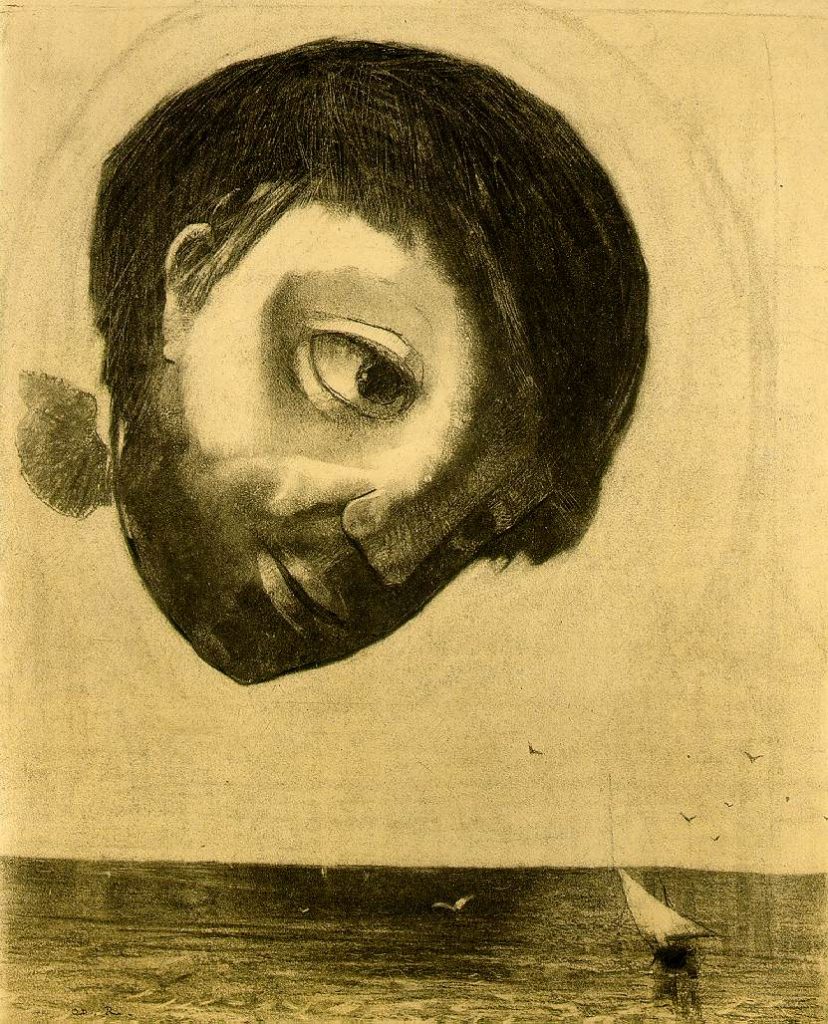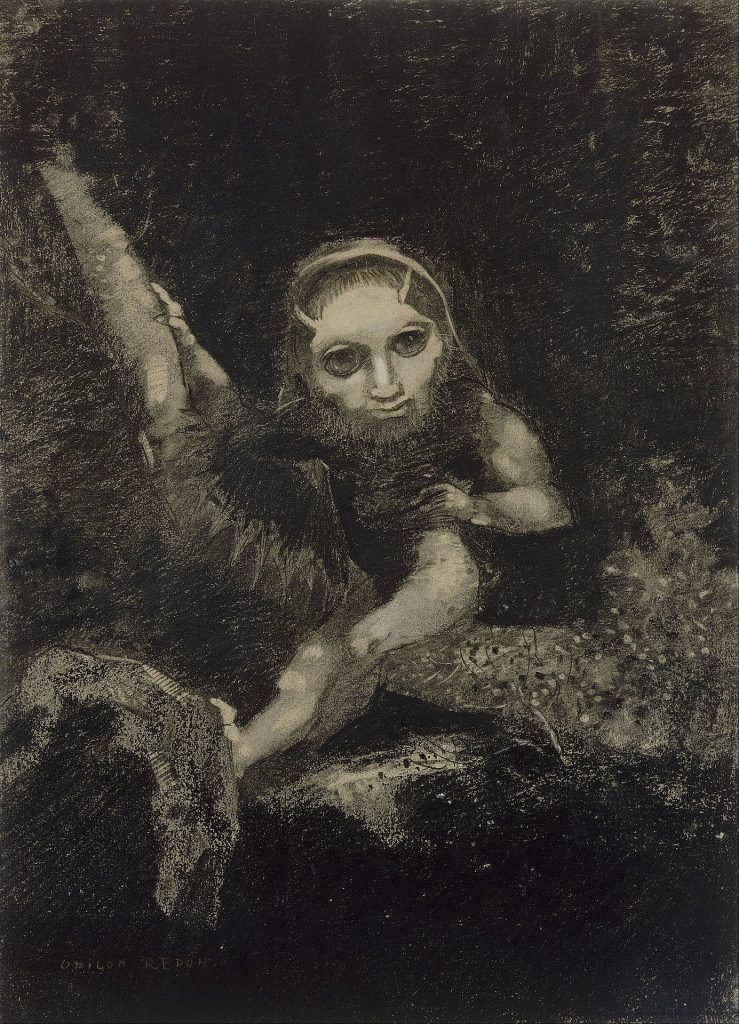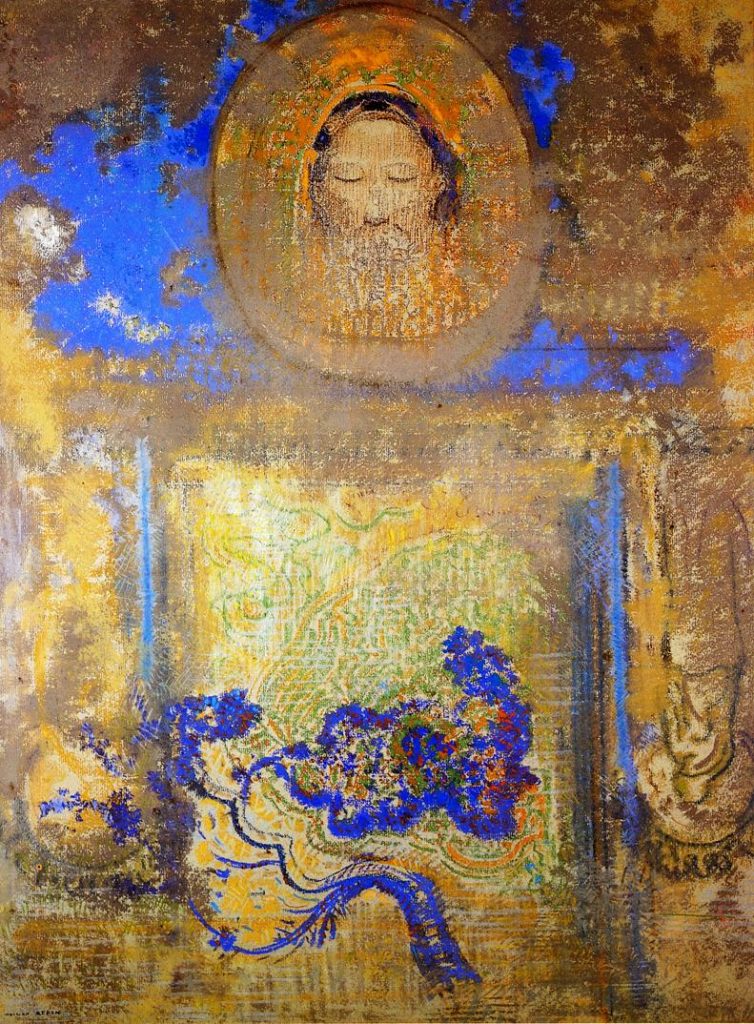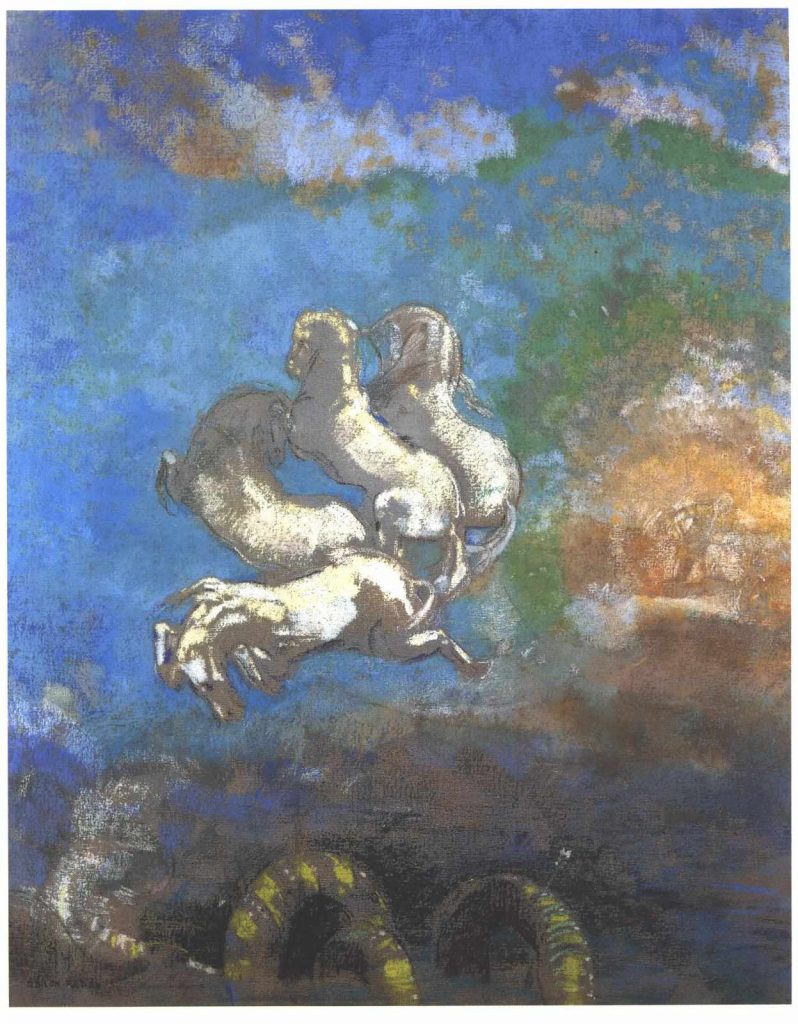Bertrand (Odilon) Redon
Odilon Redon (1840 – 1916) was a French symbolist and post-impressionist painter, printmaker, draughtsman and pastellist.
Redon was born in Bordeaux to a wealthy family. His birth name was Bertrand Redon, but he was nicknamed ‘Odilon’ by his mother, Odile. He had been drawing since he was a child, but began studying architecture at the age of fifteen at his father’ insistence. He never became an architect, but his younger brother Gaston Redon would become successful in this field.
After briefly studying painting at Paris’ École des Beaux-Arts under Jean-Léon Gérôme in 1864, he returned to Bordeaux and began sculpting. He also became learned in etching and lithography thanks to the teachings of Rodolphe Bresdin. In 1870, his artistic career was interrupted for a year when he was drafted to serve in the Franco-Prussian War.

After the war, he moved to Paris and focused on working in charcoal and lithography. He called these works, entirely made in shades of black, his ‘noirs’. His work gained a little recognition in 1879 when he published his first album of lithographs, “Dans le Rêve” (In the Dream). However, Redon still remained somewhat in the shadows until a 1884 cult novel by Joris-Karl Huysmans titled À rebours (Against Nature) featured a decadent aristocrat who collected Redon’s drawings.
In his early years, his ‘noirs’ and his other works featured fantastical and often dark imaginative figures. They demonstrate a deep exploration of his mind, feelings and psyche.

Come the 1890s, pastel and oils became Redon’s favourite media. He produced no more noirs after 1900. Redon was very interested in Hindu and Buddhist religion and culture, and this fascination showed as the Buddha became increasingly present in his work. In much of his art after 1899 the influences of Japonism can be easily seen.
In these later pastel and oil paintings, Redon made use of a non-naturalistic color palette which prefigured the later development of Expressionism and abstraction. Redon explored the power of colour to express and suggest in all of his works ranging from portraits to decorative ensembles.

A recurring theme in Redon’s works, especially in his earlier noirs, is that of the the disembodied/decapitated head. It is usually floating in the space of the canvas or reduced to a single eyeball, and it was a symbol for the desire, the need the artist felt to escape the ordinary world and achieve a higher level of consciousness. Much of his work also featured hybrid human-plant or human-animal creatures. These, that he called “his monsters” were the product of his imagination and knowledge of natural sciences. He owed much to Charles Darwin’s theories as his work on evolution established a tangible relationship between humans and other animals. I think Redon’s use symbols such as the severed head and the nightmarish yet dreamlike creatures that surge form his imagination as recccurring focal points in different pieces is what makes his work look really alive and mysterious.


Cited:
Odilon Redon, WikiArt: https://www.wikiart.org/en/odilon-redon
Odilon Redon, MoMA: https://www.moma.org/artists/4840
Odilon Redon, The Art Story: https://www.theartstory.org/artist-redon-odilon.htm
Odilon Redon, Wikipedia: https://en.m.wikipedia.org/wiki/Odilon_Redon
Odilon Redon, Britannica: https://www.britannica.com/biography/Odilon-Redon